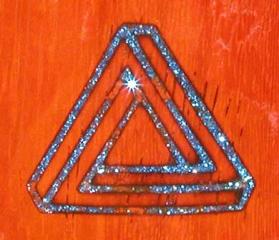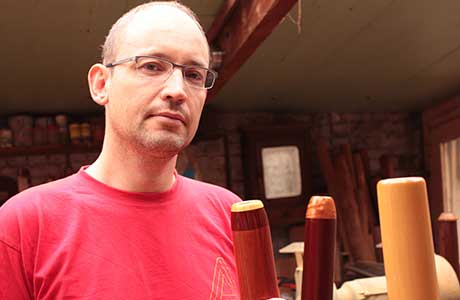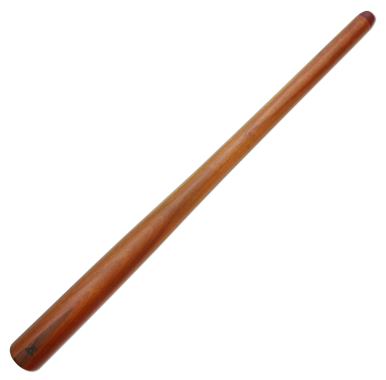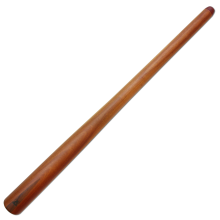Alex Didg E-E
Alex's comments: I designed this didgeridoo with several objectives, to make an instrument easy to play, with a fairly well balanced sound, and with the first hoot tuned to the drone note. The result is a very versatile instrument, which allows both a beginner to easily get to grips with it and an experienced player to have fun and let loose without constraints. It's an instrument that many people like, and I therefore decided to offer it in other notes in order to satisfy the different requests (D/D, D#/Re#, F/F currently being tuned). )
- Instrument guaranteed for 2 years by Alex
- Shipping costs are free! (only for France)
- Free carrying case !
432Hz or 440Hz?
The overall sonic difference is noticeable, the 432Hz version sounds warmer, clearer and seems to be instantly more listenable, but the 440Hz version is tighter with more dynamic energy. Almost all Western music is currently tuned with A at 440 Hz. This means that all musical instruments, tuning forks, and music creation programs are tuned to this frequency.
Please note the video opposite does not present the instrument for sale, it is a representative video extract from the Othello Signature Range. However, the photos are contractual and correspond to the instrument that will be delivered to you.
Classification
This scale is the result of an air column/bell start ratio If we divide the diameter of the bell with that of the beginning of the air column we get a number between 1.5 and 3.5. We can classify all the didgeridoos in 4 large families. Each family groups the instruments with a similar character, simply based on the overall shape of the air column (conical/cylindrical) and on the diameter of the column (wide/narrow). The result is a simple and very reliable reading grid, making it easier to search and purchase on line.
The diameters are measured with a caliper, start of the air column after the mouthpîece. This ratio is very reliable for a didg having a air column with a 'smooth' internal work, in the case of a hollowed eucalyptus instrument it give an approach of the instrumental character.

Alex Didgeridoo
French manufacturer of didgeridoos using the Sandidg method
Alex, who is he?
"My passion for making didgeridoos came to me quite naturally in 1994, when I first discovered the instrument. I then made maple instruments in the family woodworking workshop. But it wasn't until many years later, during my first trip to Australia, that I became interested in making didgeridoos from termite-hollowed Australian eucalyptus. Since then, I have worked with multiple types of wood and developed various manufacturing techniques. Always remaining curious about new woods, new protective materials, and new instruments, I am constantly enriching my skills and expanding my range of instruments."

How does Alex make his didgeridoo?
"The technique I use involves making the instrument in two parts, then gluing these parts together. The main distinguishing feature of the 'sandwich' didgeridoos I make lies primarily in the choice of wood; I don't choose a branch as a starting point, as many do, but I buy freshly cut or planed wood, perfectly dry, carefully selected, and of high quality, which I then completely carve inside and out. This method allows me to create any shape; my only constraint is the dimensions of the original piece of wood." Alex

